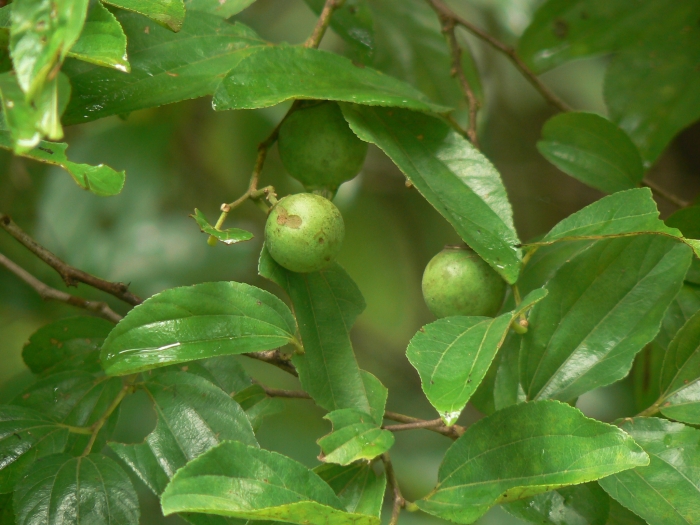Indian Jujube
(Ziziphus mauritiana)
Indian Jujube (Ziziphus mauritiana)
/
/

© Dinesh Valke
CC BY-SA 4.0
Image By:
© Dinesh Valke
Recorded By:
Copyright:
CC BY-SA 4.0
Copyright Notice:
Photo by: © Dinesh Valke | License Type: CC BY-SA 4.0 | License URL: http://creativecommons.org/licenses/by-sa/4.0/ | Uploader: dineshvalke | Publisher: iNaturalist |

























Estimated Native Range
Summary
Ziziphus mauritiana, commonly known as Indian jujube or Chinese date, is a deciduous or semi-evergreen tree native to dry tropical and subtropical regions including grasslands, savannas, and woodlands across central Africa, South and Southeast Asia. It typically grows up to 49 feet (15 meters) tall with a spreading crown and thorny branches. The glossy, ovate leaves are 1-2 inches long, and the tree produces small, fragrant, yellowish flowers. The fruit is an edible drupe that matures to a sweet, juicy, date-like flavor when ripe, varying in color from green to yellow to reddish-brown.
Indian jujube is valued for its drought tolerance and ability to thrive in a variety of soil conditions, from sandy to loamy and even in poor soils. It is often cultivated for its fruit, which can be eaten fresh, dried, or used in beverages and culinary dishes. The tree is also used in traditional medicine and as a source of timber and forage for livestock. In cultivation, it requires full sun and minimal water once established, making it suitable for xeriscaping. However, it can become invasive outside its native range, forming dense thickets that displace native vegetation. Care should be taken to manage its spread in areas where it is considered a threat to local ecosystems.CC BY-SA 4.0
Indian jujube is valued for its drought tolerance and ability to thrive in a variety of soil conditions, from sandy to loamy and even in poor soils. It is often cultivated for its fruit, which can be eaten fresh, dried, or used in beverages and culinary dishes. The tree is also used in traditional medicine and as a source of timber and forage for livestock. In cultivation, it requires full sun and minimal water once established, making it suitable for xeriscaping. However, it can become invasive outside its native range, forming dense thickets that displace native vegetation. Care should be taken to manage its spread in areas where it is considered a threat to local ecosystems.CC BY-SA 4.0
Plant Description
- Plant Type: Shrub, Tree
- Height: 4-40 feet
- Width: 6-20 feet
- Growth Rate: Moderate
- Flower Color: White, Yellow
- Flowering Season: Spring
- Leaf Retention: Evergreen
Growth Requirements
- Sun: Full Sun
- Water: Medium
- Drainage: Medium
Common Uses
Drought Tolerant, Edible*Disclaimer: Easyscape's listed plant edibility is for informational use. Always verify the safety and proper identification of any plant before consumption., Low Maintenance, Street Planting
Natural Habitat
native to dry tropical and subtropical regions including grasslands, savannas, and woodlands across central Africa, South and Southeast Asia
Other Names
Common Names: Indian Jujube, Ber, Chinese Apple, Chinese Date, Guinda, Indian Cherry, Indian Plum
Scientific Names: , Ziziphus mauritiana, Rhamnus jujuba, Sarcomphalus mauritianus, Ziziphus hysundrica, Ziziphus indica, Ziziphus insularis, Ziziphus jujuba, Ziziphus jujuba, Ziziphus jujuba var. hysundrica
GBIF Accepted Name: